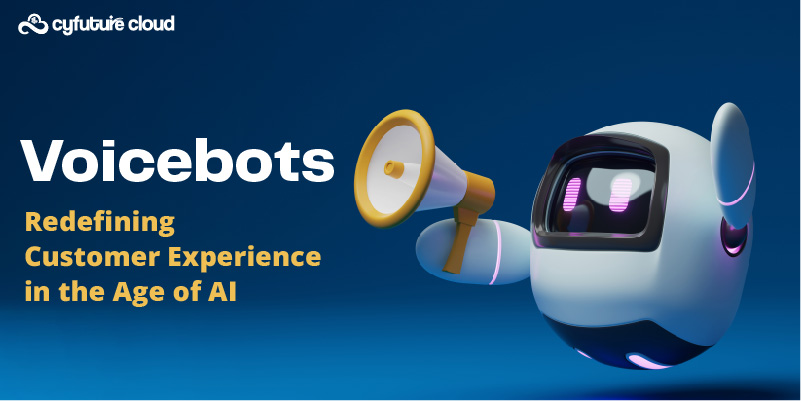Get 69% Off on Cloud Hosting : Claim Your Offer Now!
- Products
-
Compute
Compute
- Predefined TemplatesChoose from a library of predefined templates to deploy virtual machines!
- Custom TemplatesUse Cyfuture Cloud custom templates to create new VMs in a cloud computing environment
- Spot Machines/ Machines on Flex ModelAffordable compute instances suitable for batch jobs and fault-tolerant workloads.
- Shielded ComputingProtect enterprise workloads from threats like remote attacks, privilege escalation, and malicious insiders with Shielded Computing
- GPU CloudGet access to graphics processing units (GPUs) through a Cyfuture cloud infrastructure
- vAppsHost applications and services, or create a test or development environment with Cyfuture Cloud vApps, powered by VMware
- Serverless ComputingNo need to worry about provisioning or managing servers, switch to Serverless Computing with Cyfuture Cloud
- HPCHigh-Performance Computing
- BaremetalBare metal refers to a type of cloud computing service that provides access to dedicated physical servers, rather than virtualized servers.
-
Storage
Storage
- Standard StorageGet access to low-latency access to data and a high level of reliability with Cyfuture Cloud standard storage service
- Nearline StorageStore data at a lower cost without compromising on the level of availability with Nearline
- Coldline StorageStore infrequently used data at low cost with Cyfuture Cloud coldline storage
- Archival StorageStore data in a long-term, durable manner with Cyfuture Cloud archival storage service
-
Database
Database
- MS SQLStore and manage a wide range of applications with Cyfuture Cloud MS SQL
- MariaDBStore and manage data with the cloud with enhanced speed and reliability
- MongoDBNow, store and manage large amounts of data in the cloud with Cyfuture Cloud MongoDB
- Redis CacheStore and retrieve large amounts of data quickly with Cyfuture Cloud Redis Cache
-
Automation
Automation
-
Containers
Containers
- KubernetesNow deploy and manage your applications more efficiently and effectively with the Cyfuture Cloud Kubernetes service
- MicroservicesDesign a cloud application that is multilingual, easily scalable, easy to maintain and deploy, highly available, and minimizes failures using Cyfuture Cloud microservices
-
Operations
Operations
- Real-time Monitoring & Logging ServicesMonitor & track the performance of your applications with real-time monitoring & logging services offered by Cyfuture Cloud
- Infra-maintenance & OptimizationEnsure that your organization is functioning properly with Cyfuture Cloud
- Application Performance ServiceOptimize the performance of your applications over cloud with us
- Database Performance ServiceOptimize the performance of databases over the cloud with us
- Security Managed ServiceProtect your systems and data from security threats with us!
- Back-up As a ServiceStore and manage backups of data in the cloud with Cyfuture Cloud Backup as a Service
- Data Back-up & RestoreStore and manage backups of your data in the cloud with us
- Remote Back-upStore and manage backups in the cloud with remote backup service with Cyfuture Cloud
- Disaster RecoveryStore copies of your data and applications in the cloud and use them to recover in the event of a disaster with the disaster recovery service offered by us
-
Networking
Networking
- Load BalancerEnsure that applications deployed across cloud environments are available, secure, and responsive with an easy, modern approach to load balancing
- Virtual Data CenterNo need to build and maintain a physical data center. It’s time for the virtual data center
- Private LinkPrivate Link is a service offered by Cyfuture Cloud that enables businesses to securely connect their on-premises network to Cyfuture Cloud's network over a private network connection
- Private CircuitGain a high level of security and privacy with private circuits
- VPN GatewaySecurely connect your on-premises network to our network over the internet with VPN Gateway
- CDNGet high availability and performance by distributing the service spatially relative to end users with CDN
-
Media
-
Analytics
Analytics
-
Security
Security
-
Network Firewall
- DNATTranslate destination IP address when connecting from public IP address to a private IP address with DNAT
- SNATWith SNAT, allow traffic from a private network to go to the internet
- WAFProtect your applications from any malicious activity with Cyfuture Cloud WAF service
- DDoSSave your organization from DoSS attacks with Cyfuture Cloud
- IPS/ IDSMonitor and prevent your cloud-based network & infrastructure with IPS/ IDS service by Cyfuture Cloud
- Anti-Virus & Anti-MalwareProtect your cloud-based network & infrastructure with antivirus and antimalware services by Cyfuture Cloud
- Threat EmulationTest the effectiveness of cloud security system with Cyfuture Cloud threat emulation service
- SIEM & SOARMonitor and respond to security threats with SIEM & SOAR services offered by Cyfuture Cloud
- Multi-Factor AuthenticationNow provide an additional layer of security to prevent unauthorized users from accessing your cloud account, even when the password has been stolen!
- SSLSecure data transmission over web browsers with SSL service offered by Cyfuture Cloud
- Threat Detection/ Zero DayThreat detection and zero-day protection are security features that are offered by Cyfuture Cloud as a part of its security offerings
- Vulnerability AssesmentIdentify and analyze vulnerabilities and weaknesses with the Vulnerability Assessment service offered by Cyfuture Cloud
- Penetration TestingIdentify and analyze vulnerabilities and weaknesses with the Penetration Testing service offered by Cyfuture Cloud
- Cloud Key ManagementSecure storage, management, and use of cryptographic keys within a cloud environment with Cloud Key Management
- Cloud Security Posture Management serviceWith Cyfuture Cloud, you get continuous cloud security improvements and adaptations to reduce the chances of successful attacks
- Managed HSMProtect sensitive data and meet regulatory requirements for secure data storage and processing.
- Zero TrustEnsure complete security of network connections and devices over the cloud with Zero Trust Service
- IdentityManage and control access to their network resources and applications for your business with Identity service by Cyfuture Cloud
-
-
Compute
- Solutions
-
Solutions
Solutions
-
 Cloud
Hosting
Cloud
Hosting
-
 VPS
Hosting
VPS
Hosting
-
GPU Cloud
-
 Dedicated
Server
Dedicated
Server
-
 Server
Colocation
Server
Colocation
-
 Backup as a Service
Backup as a Service
-
 CDN
Network
CDN
Network
-
 Window
Cloud Hosting
Window
Cloud Hosting
-
 Linux
Cloud Hosting
Linux
Cloud Hosting
-
Managed Cloud Service
-
Storage as a Service
-
 VMware
Public Cloud
VMware
Public Cloud
-
 Multi-Cloud
Hosting
Multi-Cloud
Hosting
-
 Cloud
Server Hosting
Cloud
Server Hosting
-
 Bare
Metal Server
Bare
Metal Server
-
 Virtual
Machine
Virtual
Machine
-
 Magento
Hosting
Magento
Hosting
-
Remote Backup
-
 DevOps
DevOps
-
 Kubernetes
Kubernetes
-
 Cloud
Storage
Cloud
Storage
-
NVMe Hosting
-
 DR
as s Service
DR
as s Service
-
-
Solutions
- Marketplace
- Pricing
- Resources
- Resources
-
By Product
Use Cases
-
By Industry
- Company
-
Company
Company
-
Company
Don’t Let Buzzwords Drive your Cloud Architecture
Table of Contents
Cloud computing has revolutionized businesses’ operations by providing unparalleled flexibility, scalability, and cost-effectiveness. However, the hype surrounding cloud computing has resulted in an overload of buzzwords and jargon, such as “serverless,” “microservices,” and “containers.” These buzzwords often drive cloud architecture decisions, leading businesses to overlook their needs and requirements.
According to a recent survey, 80% of IT decision-makers believe buzzwords negatively impact their decision-making process, leading to confusion and inefficiencies in their cloud architecture. Many businesses have adopted cloud solutions unsuitable for their needs, resulting in wasted resources and increased costs.
It’s crucial to remember that cloud architecture should be built based on the specific needs and requirements of the business. This means understanding the business’s goals, budget, and infrastructure limitations before selecting the appropriate cloud solutions. By doing so, businesses can ensure that their cloud architecture is cost-effective but also scalable and secure.
In this blog, we’ll explore the impact of buzzwords on cloud architecture and discuss the importance of building cloud architecture based on business needs. We’ll also provide insights and tips for businesses looking to make informed cloud architecture decisions.
Common Buzzwords in Cloud Architecture
Cloud computing has taken the world by storm, and with it comes a multitude of buzzwords and jargon that can be confusing and overwhelming for businesses. These buzzwords often drive cloud architecture decisions, but without proper understanding, they can lead to ineffective and inefficient solutions. In this section, we’ll explore some of cloud architecture’s most commonly used buzzwords and their potential impact on your business.
Serverless Computing
Serverless computing is a popular buzzword in a cloud architecture that promises cost-effectiveness and scalability by eliminating the need for servers. However, the reality is that serverless computing still requires servers, and the cost can quickly add up as businesses scale. In fact, a recent survey found that 32% of businesses have experienced unexpected serverless costs.
Microservices
Microservices refer to an architectural approach where an application is built as a set of small, independent services. While microservices can increase agility and scalability, they can also add complexity to cloud architecture. A recent survey found that 38% of IT decision-makers struggle with the complexity of microservices.
Containers
Containers are a lightweight way to package software applications and their dependencies, making them easier to deploy and manage. However, while containers can improve portability and flexibility, they can also introduce security risks. A recent survey found that 94% of organizations have experienced a security incident due to their container strategy.
Hybrid Cloud
Hybrid cloud refers to a combination of public and private cloud environments. While the hybrid cloud can provide flexibility and cost savings, it can also introduce complexity and management challenges. A recent survey found that 45% of businesses struggle with the complexity of hybrid cloud management.
Understanding the potential impact of these buzzwords on your cloud architecture decisions is important. By doing so, businesses can make informed decisions aligning with their needs and requirements.
Pitfalls of Building Cloud Architecture around Buzzwords
While buzzwords in cloud architecture can sound appealing and promising, building cloud solutions solely around these buzzwords can lead to several pitfalls. This section will explore some common pitfalls of building cloud architecture around buzzwords.
Lack of Alignment with Business Objectives
Building cloud architecture around buzzwords can result in solutions not aligning with business objectives. According to a recent survey, 73% of IT decision-makers believe that business needs do not drive cloud architecture decisions. This can lead to cloud solutions that do not meet the specific needs and requirements of the business, resulting in wasted resources and missed opportunities.
Complexity and Difficulty in Managing the Cloud Environment:
Buzzwords in cloud architecture can often lead to increased complexity and difficulty in managing the cloud environment. A recent survey found that 67% of IT decision-makers struggle with the complexity of their cloud environment. This can lead to increased costs, security risks, and operational inefficiencies.
Overpaying for Unnecessary Services
Building cloud architecture around buzzwords can also result in overpaying for unnecessary services. According to a recent survey, 35% of IT decision-makers believe that cloud costs are higher than expected due to the complexity of cloud solutions. This can lead to increased costs and a reduced return on investment.
Increased Risk of Vendor Lock-in
Cloud solutions built solely around buzzwords can also increase the risk of vendor lock-in. This occurs when businesses become dependent on a particular vendor’s cloud services, making switching to a different provider difficult. According to a recent survey, 38% of IT decision-makers cite vendor lock-in as a concern in their cloud architecture decisions.
In conclusion, while buzzwords in cloud architecture can be tempting, it’s important to avoid building solutions solely around them. By doing so, businesses can avoid the pitfalls of misaligned solutions, complexity, unnecessary costs, and vendor lock-in. Instead, it’s important to focus on building cloud solutions that align with specific business needs and requirements.
Best Practices for Building Cloud Architecture Based on Business Needs
To ensure that cloud architecture aligns with business needs and requirements, it’s important to follow best practices. This section will explore some of the best practices for building cloud architecture based on business needs.
Identifying Business Objectives and Requirements
Before building a cloud architecture, it’s important to identify specific business objectives and requirements. This can ensure that cloud solutions are aligned with business needs. According to a recent survey, 60% of businesses cite the alignment of cloud solutions with business needs as the most critical factor in cloud adoption.
Choosing the Right Cloud Provider and Services Based on the Identified Requirements
Choosing the right cloud provider and services is critical to building effective cloud solutions. This requires thoroughly understanding business requirements and evaluating different cloud providers and services. According to a recent survey, 38% of businesses cite the availability of the required cloud services as a critical factor in cloud adoption.
Building a Scalable and Flexible Architecture
To accommodate changing business needs, it’s important to build a cloud architecture that is scalable and flexible. This can ensure that cloud solutions can grow and evolve with the business. According to a recent survey, 70% of businesses cite scalability as the most important factor in cloud adoption.
Keeping the Architecture Simple and Manageable
To avoid complexity and ensure efficient management, it’s important to keep the cloud architecture simple and manageable. This can ensure that cloud solutions are easy to manage and can be maintained over time. According to a recent survey, 41% of IT decision-makers cite simplicity as a critical factor in cloud adoption.
By following these best practices, businesses can ensure that their cloud architecture aligns with business needs, is cost-effective, and can grow and evolve with the business. This can increase efficiency, flexibility, and agility, enabling businesses to stay competitive in a rapidly changing marketplace.
Conclusion
In conclusion, building cloud architecture based on buzzwords can result in several pitfalls, including misaligned solutions, complexity, unnecessary costs, and vendor lock-in. To avoid these pitfalls, it’s critical to build cloud solutions that align with specific business needs and requirements.
Identifying business objectives and requirements, choosing the right cloud provider and services, building a scalable and flexible architecture, and keeping the architecture simple and manageable are some of the best practices to ensure that cloud architecture aligns with business needs.
It’s important to note that building cloud architecture is not a one-time event, and it requires continuous evaluation and optimization to ensure alignment with business needs. According to a recent survey, 72% of IT decision-makers believe that continuous optimization of cloud architecture is critical to achieving maximum ROI.
By following best practices and continuously evaluating and optimizing cloud architecture, businesses can ensure that their cloud solutions are cost-effective, scalable, and flexible, enabling them to stay competitive in a rapidly changing marketplace.
Recent Post

Stay Ahead of the Curve.
Join the Cloud Movement, today!
© Cyfuture, All rights reserved.
Send this to a friend

 Pricing
Calculator
Pricing
Calculator
 Power
Power
 Utilities
Utilities VMware
Private Cloud
VMware
Private Cloud VMware
on AWS
VMware
on AWS VMware
on Azure
VMware
on Azure Service
Level Agreement
Service
Level Agreement 


















